
Question: When the girl is going into the car wash, the sign right before she enters on the left advises her to put the car into neutral, but to make sure her foot is on the brake. Neutral would allow the car to advance through the automatic wash. Having the brake engaged would prevent the car from moving forward. They cancel each other out so what is the point?
Answer: It tells her to keep it in neutral and keep her foot off the brake and the carwash stops then starts moving again when her head is stuck; out of the sunroof.

Question: If the character's nicknames (Columbus, Tallahassee, etc) come from their destinations, how come Witchita & Little Rock have different names, when they're sisters and are coming from - and heading to - the same place?
Answer: The names come from their hometowns, not their destinations. Witchita is much older than Little Rock; she could have spent the majority of her childhood in Witchita before her family moved to Little Rock where her sister was born. She still considers Witchita to be her "hometown".

Question: I was just wondering why, at the end of the movie, the name of the company changed from Colston to something like Ruiz and Hunt. I mean, Margaret's last name was "Tate" so her leaving shouldn't have caused a name change. (I apologize if the names are incorrect, I've only gotten to watch it once at a friend's house, so the movie isn't readily available for me to check).
Chosen answer: The building is named Ruik and Hunt, the publishing company is Colston, which is housed inside the building. The company never changed names.
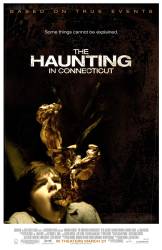
Question: What is the mortician carving into the skin of the stolen dead bodies?
Chosen answer: Nothing specific, the carving of mystical symbols is just meant to be a means of furthering his power.

Question: If Pahud thinks that Paul Blart is with his girlfriend, why does he make him his "homie"? Wouldn't he hate Paul for taking his girlfriend?
Answer: Paul explains to Pahud that it's a misunderstanding, and Pahud then makes Paul Blart his homie.

Question: They take a bunch of fireflies and put them in a jar with a lid to use it as a lamp, is this really possible? How many of them would be needed?
Answer: First, you'd have to figure out how much light production you would qualify as being sufficient to consider the fireflies in a jar a "lamp." Lights are often rated in footcandle, lumens, or lux. Without getting into what all that means, you could probably hike a path in the dark with just 25 lumens, which is a little less than 2.5 footcandles. (By comparison, a bedroom may have 20-50 footcandles but an outdoor parking area may only have 1-5 footcandles and street lighting may be 1-3 footcandles). With that in mind, it also depends on the species. The most common firefly in the US produces 1/40 a candle. So 40 fireflies for 1 footcandle and 100 to have a "lamp" to hike with. It should also be noted males light every 5 seconds and females light ever 2 seconds, so you would need more if they're not all lighting up at once.

Question: Wouldn't the city have found out that someone was using the hotel when there was electricity being used but no-one to pay for it?
Answer: Not until there's a 3 month period where the electricity usage is much higher than normal. Even then, it takes another few months to get it noticed, and another couple of months to send someone out to investigate it.
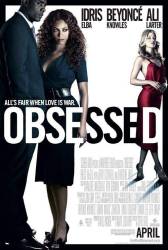
Question: It seems whenever this movie is played on TV, the start of the scene where Sharon is yelling at Derek in the house edits out the part at the start where Sharon yells "What? WHAT!?" and throws and breaks a dish. Why is this edited out? It always starts at the line she says right after that.
Answer: There is no set format for a feature-length film's running time in theaters (some bodies state a minimum of 40 minutes, some 80). They are edited to fit TV scheduling. Scenes are often cut short or deleted entirely to eliminate objectionable content, but also so the film can begin and end on the hour or half hour (i.e. It starts precisely at 8:00 p.m. And ends at 10:00 pm) so that the next program can run. It also has to allow time for commercials and station breaks during the airing. This often leaves the original movie rather chopped-up. That is probably what happened with this particular film.
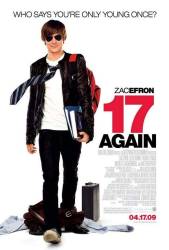
Question: If Mike's ex-wife (Scarlet) recognizes him from when they were teenagers, wouldn't the coach remember him too? He was the star player.
Answer: I've not seen the movie, but an ex-wife would be closer to her ex-husband than a coach to his old student, no matter how good.
Answer: It's also possible that the coach might have noticed a resemblance, but he would have simply written it off as an odd coincidence, much like Scarlet did earlier in the film.
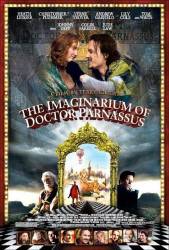
Question: What's up with Percy (the midget)? He was with Dr. Parnassus decades ago, when he won a bet with the devil to win the heart of a woman he craved, but he hasn't aged a day since. Or was that another midget and Dr. Parnassus has a tendency to pick midgets up to live in poverty by his side, and these two just happen to look identical? Both were obviously played by the same actor (Verne Troyer) and some make-up would easily disguise this, so I'm guessing this is intentional.
Answer: Percy's backstory is never touched upon, but he certainly appears to have been with Parnassus for a substantial period of time, longer than his visual age would suggest. Possibly he himself has done his own deal with the Devil, or some other power, to extend his life, but, if so, the film never elaborates on it.

Question: When the police go to Lisbeth Salander's old apartment - the one Miriam is living in - thinking Lisbeth lived there, so they can search the place, one of the policeman says, "How come the name-plate on the door says 'Salander'?" The other policeman says, "I have no idea." But they are there to search Lisbeth "Salander's" place! Can someone please explain to me why they are there if they don't believe it is the Salander place?
Chosen answer: They are looking at the mail which is all addressed to Miriam Wu, and medicine in the bathroom cabinet which is prescribed to her. So they realise someone called Miriam Wu is living there (or Lisbeth is living there under that name), and wonder why the name plate still says "Salander".
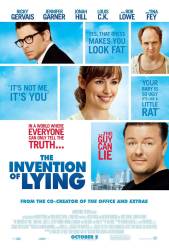
Question: I know everybody tells the truth, but why does everyone say what they are thinking? If you don't say what you are thinking it doesn't mean you are lying.
Answer: It's an imaginary world with its own logic. You could theorize that people were raised this way. Also, you could imagine that since they have to say bad things to answer most questions, why not say bad things all the time, i.e. if your wife asks if you like her dress, you have to say you hate it, so why wait to be asked. Really, the film makers did it because it's funny. If you made a movie where people only spoke when they had something nice to say, it would be very boring.

Question: In the flashback scene of Rex entering the secret facility, what was he looking at on all of the computer screens and why would he use them later on after he faked his death?

Question: When the boat first starts sinking, some nameless crew members are shown trying to sort things out. But I don't remember them appearing again, even when the DJs were being rescued. Did they drown?
Chosen answer: They can be seen in a couple of long shots of the ship's prow as the DJs shelter there. It's reasonable to assume, given that they were present when the rescue flotilla arrived, that they were picked up as well, just off-screen while the film focused on the main characters.
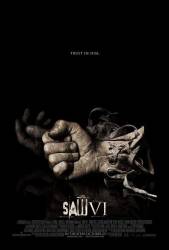
Question: In the beginning scene where the two participants had to cut flesh in order to survive, what was to stop them simply putting other stuff on the scales instead of flesh, such as the heavy tools and knives and escaping that way?
Answer: The tools were chained to the tables, and there wasn't anything else they could've thrown down onto the scales.

Question: At the ending of the director's cut, it shows that Laurie, Michael, and Loomis are all dead. But, the following scene is the ending of the theatrical cut with Laure in the insane asylum. Could somebody clarify this?
Answer: When the movie was made there were two possible endings filmed with one being selected for the theatrical release. Filmmakers often pre-screen a film to a test audience to gauge their reaction. This can decide whether or not changes will be made to the finished film, including an alternate ending. The director's cut here is simply showing audiences both scenes that were filmed as an "extra" feature. Other movies have included this, as well as showing deleted scenes.


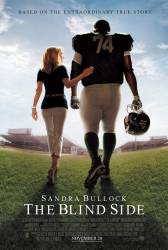

Chosen answer: Actualy it says she should put it in neutral and keep her foot OFF the brake.